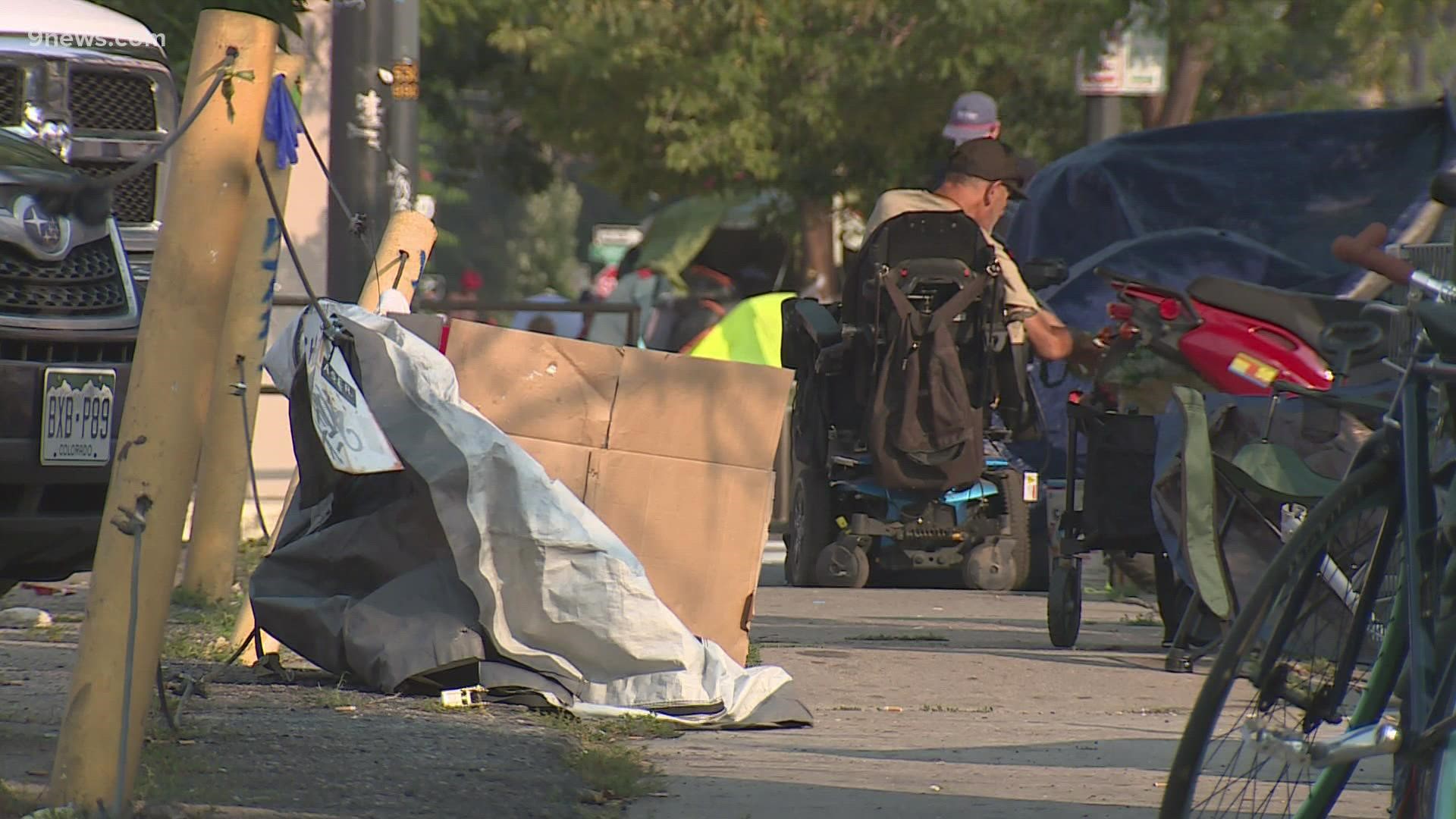DENVER — The City of Denver's Department of Housing Stability (HOST) released the new draft of it's five-year plan to address homelessness and housing.
The plan comes after more than a year of public input from residents, stakeholders and partners, the city said in a press release Wednesday.
Among other things, the plan is supposed to help guide how HOST invests resources and resolve episodes of homelessness.
“We are going to continue to deploy every tool available, with a goal of lifting thousands of people out of homelessness over the next two years, including those who are living on our streets in the most unsafe and unhealthy of conditions,” said Mayor Michael B. Hancock. “We know what works, and we’re going to do even more and even better. This plan will further solidify housing and homelessness resources as an essential city service, while strengthening our community’s hand toward building a healthy, housed and connected Denver.”
The city says the plan will also be presented at the following two virtual community meetings, with interpretation to be provided on Thursday, Aug. 19 and Tuesday Aug. 24.
While there are several goals for this plan by 2026, it isn't the first time the city has put itself on a timeline for an issue like homelessness and housing.


The drafted plan
The plan includes 14 goals that the city says in part will, "...help create a Denver where race no longer predicts outcomes for involuntary displacement, homelessness, homeownership or cost burden..."
Some of the plan's goals for 2026 by HOST and other partners include:
- Create and preserve 7,000 homes
- Preserve 950 income-restricted rentals
- Measurably end veteran homelessness
- Reduce unsheltered homelessness by 50%
- Increase the number of people who exit shelter into housing from 30% to 40%, and families from 25% to 50%
- Reduce the average length of time residents experience homelessness to 90 days
- Reduce eviction filings by 25%
- Increase households served in rehousing and supportive housing programs from 1,800 to 3,000
- Help address gentrification with policies that prioritize affordable housing for residents at risk of or who have been involuntarily displaced
- Increase homeownership among low- and moderate-income households, with a focus on households that are Black, Indigenous, and People of Color
- Reduce contract and procurement times
"We certainly have shot for an ambitious goal in this plan and several ambitious goals because we feel that the community is coming together and rallying together to address homelessness and housing instability in Denver," Britta Fisher, the city's chief housing officer, told 9NEWS Wednesday. "These are the kinds of actions that we all need to rally together to really address what we're seeing in our community right now."
Some advocacy groups hope this plan fares well, if adopted by the city council.
"Well, there's always hope that they'll get on it. I mean, the city is doing better, but that has so far to go because it's so far behind," said Benjamin Dunning, an organizer with the group Denver Homeless Out Loud. "...The thing that ends homelessness is a place to live."
He adds that he believes if the housing units are owned by the city, they'll be able to better control costs, making it easier to get people housed.
"...Well, I think the city can reach higher goals, but the matter is whether or not they're going to commit to meeting those goals," he said.


Below is a similar plan that the city put together previously to address homelessness and housing issues.
Plan from the past
Back in 2005, the U.S. Senator of Colorado, John Hickenlooper, introduced a 10-year plan to end homelessness, when he was Denver's Mayor.
"Our plan balances the provision of housing, treatment services, and job training with the expectations of responsibility and self-reliance from those who receive the services," Hickenlooper said about the plan during his State of the City address in 2005.
Nine years into that plan in 2014, 9Wants to Know analyzed the numbers from yearly point-in-time (PIT) reports.
PIT tracks the total number of people experiencing homelessness on a given night.
The 2014 analysis suggested that in three key areas, which included those listed as chronically homeless in Denver and the greater metro area, show the numbers have actually gone up since the start of the 10-Year Plan to End Homelessness in 2005.
In a 2014 interview, Hickenlooper, who was Governor at the time, said the recession, among other things, were to blame.
"I think what clobbered us was the economy," he said. "To try to say where we are now – after going through a recession like that – invalidates what we did, I think, is an unfair comparison."
SUGGESTED VIDEOS: Latest from 9NEWS
MORE WAYS TO GET 9NEWS
Subscribe to our daily 9NEWSLETTER for top stories from 9NEWS curated daily just for you. Get content and information right now for can’t-miss stories, Next and Broncos content, weather and more delivered right to your inbox.
DOWNLOAD THE 9NEWS APP
iTunes: http://on9news.tv/itunes
Google Play: http://on9news.tv/1lWnC5n
HOW TO ADD THE 9NEWS APP TO YOUR STREAMING DEVICE
ROKU: add the channel from the ROKU store or by searching for KUSA.
For both Apple TV and Fire TV, search for "9news" to find the free app to add to your account. Another option for Fire TV is to have the app delivered directly to your Fire TV through Amazon.

